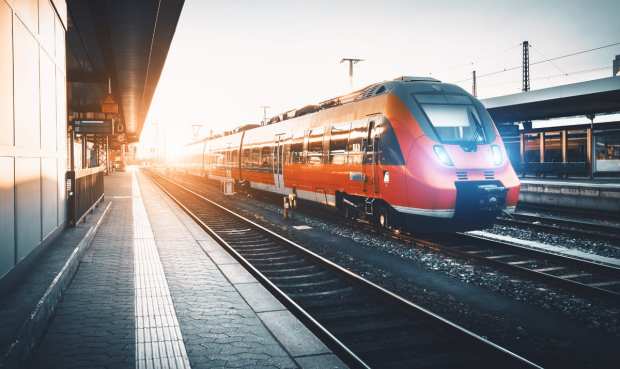From Why To How Fast: Getting Contactless Payments Up To Speed In Public Transportation

COVID-19 is derailing public transportation the world over, but Fernando Souza, vice president at payments platform CyberSource tells PYMNTS it’s also creating a huge push toward replacing cash and paper tickets with contactless payments. The conversations with transportation systems are no longer about ‘why’ but ‘how fast.’ Here’s what it takes to answer that question.
The COVID-19 pandemic has hit public transportation usage all over the world, with New York and London seeing ridership fall by 90 percent or more. Consumers sheltering in place and under lockdown don’t need it, and even people who do have places to go are worried about catching coronavirus.
Fernando Souza, vice president at payments platform CyberSource, a Visa solution, told PYMNTS in a recent conversation that such fears have public transit systems around the world looking at moving to EMV contactless payments and away from cash, paper tickets and closed-loop, card-based systems.
“What we are seeing is an acceleration of all of these urban mobility-based EMV contactless projects, especially because it is now more important than ever to provide a touchless payment experience,” Souza said. “Adopting contactless means people don’t need to touch cash, paper, tickets, vending machines or even the terminal at the gate. They can just tap and go. More than just ensuring safety, this reduces [public transit operators’] operational costs incurred by their current ticketing systems.”
Souza noted that such a change would come at a time when transit systems have lost billions of dollars between the near-overnight loss of most riders and the increased cost of additional cleaning and safety procedures.
With global transit systems under financial pressure, he said that many of them are looking to upgrade to EMV contactless payments – and fast. Integrations that would have likely taken years to get off the ground will become operational in a matter of months.
Rapidly Meeting Global Demand
The executive said the question among transit systems around the globe has changed from “are we going to do this?” to “how are we going to get it done right now?”
We are seeing a lot of movement behind the scenes in our projects,” Souza said. “Many cities are getting prepared to launch these projects as the restrictions have tightened ridership … and they are calling on us to do the preparations faster than ever before.”
CyberSource’s role in enabling EMV contactless transportation payments is to bridge the three main participants in this technology implementation: the public transit operator (PTO) that controls the transit systems and infrastructure, the technology firm providing the overall payment solution (which includes fare engines), and the acquiring bank that authorizes the transactions.
CyberSource serves as the connection point between all three parties in a secure, reliable and scalable way. Souza said that last point is incredibly critical, given the scale at which many public transportation systems operate under normal conditions.
“Mass transit systems run literally millions of transactions per day, so it needs to be very fast and reliable for people to go through the gates and onto the train or bus,” Souza noted. “For CyberSource, our role is to connect these three worlds – the PTO infrastructure, the solution provider and the payment ecosystem – such that they can accept Visa or other payment brands within their transportation system.”
What’s Coming Down The Track?
Souza said that for all of the trouble it’s caused, the global pandemic has also shown an incredible power to stimulate digital innovation. Worldwide interest in switching to EMV contactless payments in stores, restaurants and every other place has exploded. “We have seen a few years’ worth of progress go online in a few months,” Souza noted.
In the world of transit specifically, that big digital boost is pushing the project forward and into the public’s hands at rates much faster than ever.
“Visa is currently engaged with over 500 different cities that are in different stages of implementation around the world,” Souza said. “A year from now, we expect these projects to be live, or at least moving through accelerated implementation status. The digital train has really arrived, so to speak – and PTOs all over the world are working double-time trying to make sure they are on it.”
